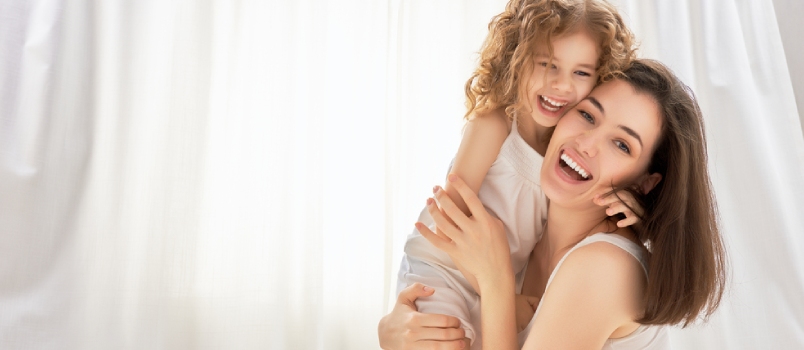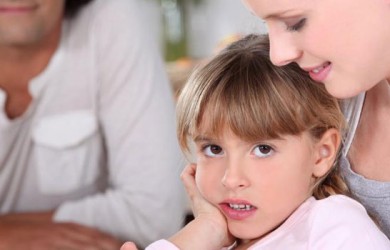How Attachment Styles Affect Relationships

Unlock Daily 30-Sec Tips for a Happier Relationship
👉 Subscribe FREEKey Takeaways
Marriage.com AI Quick Summary
We all know the cat and mouse game in relationships. It is that familiar dynamic of the chaser and the chased. Hollywood and popular culture do a great job of depicting this dance in the courting phase of a budding romance.
Instead of the chase going on forever, though, we often witness a happy ending, with the mouse swooning in the cat’s embrace and the game complete.
What about when the chasing game continues long after the initial quest is over?
How do we manage the back and forth dance that extends past the honeymoon phase and into the humdrum and everyday rhythm of the relationship?
In the world of psychology, the cat and mouse behavior of craving or avoiding someone else is attributed to our early attachment patterns or attachment styles.
These styles or behaviors grew from our relationship with our mothers (or primary caregivers) when we were babies and have extended all the way into the bedrooms of our adult lives.
What is attachment?
Attachment is the primary bond that develops between two individuals in order to fulfill the basic needs of the bond or the relationship. It can be between a parent and child or between spouses. Attachment in relationships occurs through everyday interactions and oxytocin plays the main role in developing the bond.
Related Reading: Love Vs. Attachment: Understanding the Difference
Impact of attachment styles
Attachment styles in adults influence and impact how they experience life and relate to others.
Some of us will be fortunate enough to have a secure attachment style, which will lead to positive relationships with others.
While others might develop anxious or avoidant attachment styles, leading to problems in the way that they relate to their partners or spouses and in how they experience the world.
But that’s not all.
The impact on a person’s perspective (whether it’s secure or insecure) will compound as you walk through life continually proving to yourself that the world is either secure or insecure (depending on your attachment style).
Those who think the world is secure thrive in all ways.
Those that have an insecure attachment style become insecure, untrusting, and pessimistic and find it hard to believe that they can achieve their goals because they haven’t experienced it in the past. Frankly, that’s never happened to them before.
This cycle of compounding experiences continues until the person with insecure attachment in relationships realizes and consciously makes an effort to override their early childhood programming.
A lot of people experience conflict, loneliness, and challenges in the way that they relate to others and experience life. and since every one of us thrives on the connection, that’s a sad state of affairs.
However, there is hope.
Understanding what are attachment styles and what is your attachment styles in relationships can help us to understand our strengths, weaknesses, and vulnerabilities in our relationships.
This allows us the opportunity to understand ourselves or our spouse and find the means to heal or work with an insecure attachment.
Is that even if you did grow up feeling insecure in the world, you could reconcile and heal this situation, and find a way to override your insecure programming, and even develop a secure attachment.
What is attachment theory?
John Bowlby and Mary Ainsworth’s joint work on, The Attachment Theory, draws on the concepts from ethology, cybernetics, information processing, developmental psychology, and psychoanalysts.
The theory describes attachment as a “lasting psychological connectedness between human beings, with its most important tenet being the development of a relationship between a child and at least one primary caregiver for normal social and emotional development.
The attachment theory acts as a strong establishment for understanding the development of ineffective coping methodologies and the hidden elements of an individual’s emotional challenges.
4 types of attachment styles
Psychologists and researchers have defined two main groups of relationship attachment styles.
- Secure attachment
- Insecure attachment
A. Secure attachment
Adults with secure attachments had mothers who met their emotional needs when they were babies. Their mothers:
- Consistently picked them up when they cried.
- Fed them when they were hungry.
- Smiled back at them.
- Let them explore the world, knowing that their mom had their back.
Securely attached adults won’t engage in any extended version of the cat and mouse game of relationships.
They will naturally attract other securely attached adults.
Each partner will have the autonomy to go out and explore the world knowing that the other one is cheering them on, eager to inquire about their adventures and revel in physical, sexual, and emotional intimacy.
Related Reading: Building Secure Attachment with Your Spouse – Things You Can Do to Create It
To further understand a Secure attachment style, watch:
B. Insecure attachment
On the other hand, adults with insecure (a.k.a anxious) attachments had mothers who were not able to meet their emotional needs when they were babies. These mothers were:
- Inconsistent
- Unresponsive
- Rejecting
Insecure attachment styles have been further divided into three types.
- Anxious-Ambivalent
Babies who are incredibly anxious when separated from their mother and at the same time push her away when she returns.
Such individuals frequently look to their partners for approval, support, and responsiveness. Individuals with this attachment style value their relationships but are always on edge and stressed regarding the extent of their partner’s involvement.
- Anxious-Avoidant
Babies who give the impression they are independent with hardly any signs of separation anxiety when mom is unresponsive.
Individuals with anxious-avoidant attachment styles have high self-esteem and a positive perspective of themselves.
Such individuals in general accept that a relationship does not complete them and they would prefer not to rely upon others, have others rely upon them, or look for help and endorsement in social circles.
Grown-ups with this attachment style evade passionate closeness and will suppress their sentiments when confronted in an emotional circumstance.
- Disorganized
Babies who are severely abused or maltreated by their mothers. These babies have no coping response to the mother’s behavior. They are depressed, have a blank stare when being held by the mother, or show disturbing behavior like rocking back and forth when the mother is near.
For grown-ups with this style of attachment, they might crave desire from their partners, which is often the source of their fears.
Disorganized individuals do need intimacy, and yet, experience inconveniences in trusting and relying upon others. They don’t control their feelings well and stay away from emotional attachments because of their dread of getting hurt.
If you are still unclear about your own attachment style, Also, you can take the ‘Attachment Style Quiz’ to evaluate if you are attached to someone and to what extent.
Related Reading: Insecure Attachment Style: Types, Causes & Ways to Overcome
How attachment styles affect your relationship
Since most adults have not addressed the attachment styles they formed in childhood, they lug these behaviors into their adult lives, which becomes, thus becoming the emotional baggage of their relationships.
So, how your attachment style impacts your relationship? This concept is what psychologists refer to as “transference” – when someone redirects feelings and behaviors felt in childhood to a substitute relationship in adulthood.
As much as we don’t want to admit it, most of us couple with some version of our mothers and fathers. Or at least those similar traits are the ones we see in them. W and when an individual encounters specific types of stressful circumstances /events we can witness those traits in their behavior.
A common unhealthy pairing is an anxious-avoidant with an anxious-ambivalent. These two often come together in relationships to replay the dynamics with mom in childhood. Their clashing behavior can cause serious conflict in the relationship.
The ambivalent adult gets nervous when separated from their partner and desperately seeks attention from them.
They can desire and sometimes demand that their partner meet their needs. This clinging triggers the avoidant partner to head for the hills…or the basement. Once the ambivalent partner relinquishes their craving, the avoidant partner returns.
The avoidant partner is not being able to articulate their own need for attention, but the idea of separation does trigger anxiety inside of them. The more space the ambivalent partner gives their avoidant counterpart, the more both partners remain content.
Unless both partners realize that the only consistent person who is fully responsible for meeting their own needs is themselves, things are only stable until the cycle repeats itself.
Read more about the 4 Types of Attachment Styles and What They Mean
Changing your own attachment style
You won’t be able to change your partner’s attachment style, so the best thing to do is to change your attachment style.
There is always the possibility that an individual can correct the patterns they have within their psyche, but the individual needs to not only want to do so, but also find the courage to walk on unsafe territory while they explore new grounds.
Creative visualization and hypnosis would be great ways to start to regress and rebuild a secure bond with oneself.
Developing an awareness of your attachment style and how it influences your life and relationships will also help. Especially, if you also work on developing self-awareness and then creating habits to alter the patterns you identify.
How ambivalent attachment style affects adult relationships?
If you are ambivalent and feeling anxious or needy towards your partner, instead of looking for something outside of yourself to give you the attention you desire, recognize this is your attachment behavior and then ask what you can give yourself at the moment to connect to you and meet your own needs.
This may include such things as:
- Treat yourself to a massage.
- Take yourself out on a dinner date.
- Take a yoga or dance class.
- Meditate.
- Practice some other form of self-love.
- Keep a journal of your feelings to explore any patterns that trigger needy feelings.
How avoidant attachment style affects adult relationships?
In a relationship, people with avoidant attachment styles tend to have trust issues. They try to run away from the commitment overall and find it difficult to rely on people.
- Practice articulating your need for space in a gentle, compassionate way before it gets to the point where you want to run from your partner.
- Practice expressing your feelings and ask your partner to give you a safe space to articulate them without reaction or judgment.
Related Reading: Avoidant Attachment Style – Defination, Types & Treatment
How disorganized attachment style affects adult relationships?
When a person has a disorganized attachment style, they suffer from distress and confusion. On one hand, they want closeness and intimacy in the relationship, but as soon as they get it, they pull off, assuming it won’t last long.
If you are in a relationship with someone with a disorganized attachment style, don’t be the culprit for your partners’ mess!
When you get triggered, remember that your partner’s attachment style is something formed since they were babies.
Although the behavior may be re-enacted or transferred onto you, the behavior is NOT about you, nor is it a reflection of you. Don’t fall into the trap of thinking that you are to blame for your partner’s behavior.
Counseling and therapy can help
Many times we don’t know that we are acting a certain way because of our attachment styles. Having a professional work with you to increase your awareness about your attachment style is a great way to alter your behavior.
Counselors and therapists can help those with unhealthy attachment styles see how their experiences with their caregivers have molded their coping strategies and how these strategies limit their relationships in the future and contribute to their experiences of distress.
Moreover, counselors and therapists can also help people with attachment issues in relationships find ways to fulfill their unmet needs.
Real change does not come from the struggle to fix something; it comes from having an awareness of yourself and the situation. In other words, it is the awareness that causes a shift, not the struggle.
Related Reading: Couples Counseling and Why It’s so Important
Takeaway
Everyone has different attachment styles, and no one is to blame for yours. It might be easy to direct your frustration to your mother or primary caregiver, but remember that every parent loves and cares for their child to the best of their ability.
The human attachment has always been viewed as a primary, biologically-based phenomenon with strong evolutionary roots. Since attachment research has been around for only a few decades, awareness of the subject has only just begun.
Be grateful that you can gain knowledge of your attachment style and stay positive that with the right amount of awareness, self-mastery, and self-love, you can shift from an insecure to a secure attachment.
 Tips
Tips
Write your tip or submit a video tip
All tips are reviewed before the publishing.
Share this article on
Want to have a happier, healthier marriage?
If you feel disconnected or frustrated about the state of your marriage but want to avoid separation and/or divorce, the marriage.com course meant for married couples is an excellent resource to help you overcome the most challenging aspects of being married.
Related Articles
Recent Articles
Related Quizzes
Unlock Daily 30-Sec Tips for a Happier, Healthier Relationship
👉 Subscribe FREE on YouTube We'd love your feedback!
We'd love your feedback!
 Expert Q&A
Expert Q&A
Ask your question related to this topic & get the support you deserve from experts.



















 Thanks for your feedback!
Thanks for your feedback!